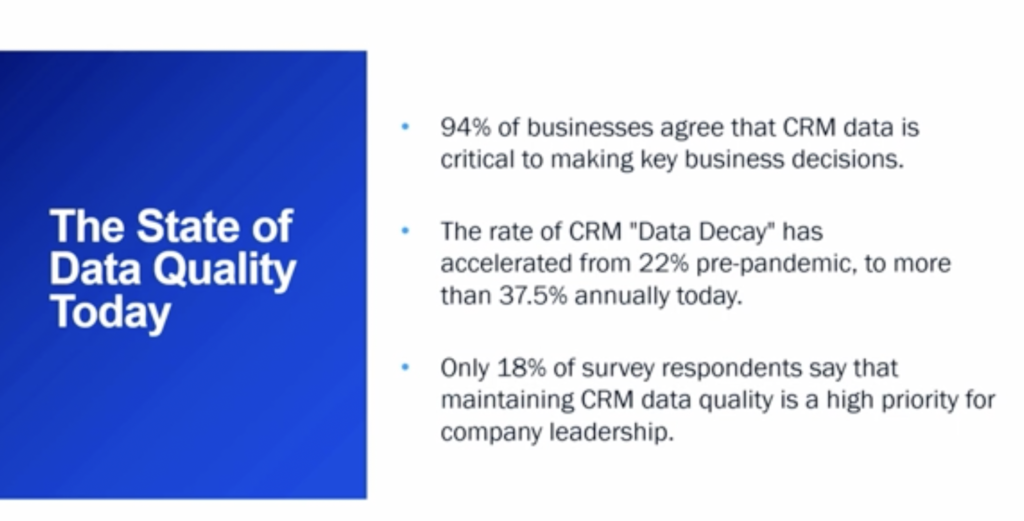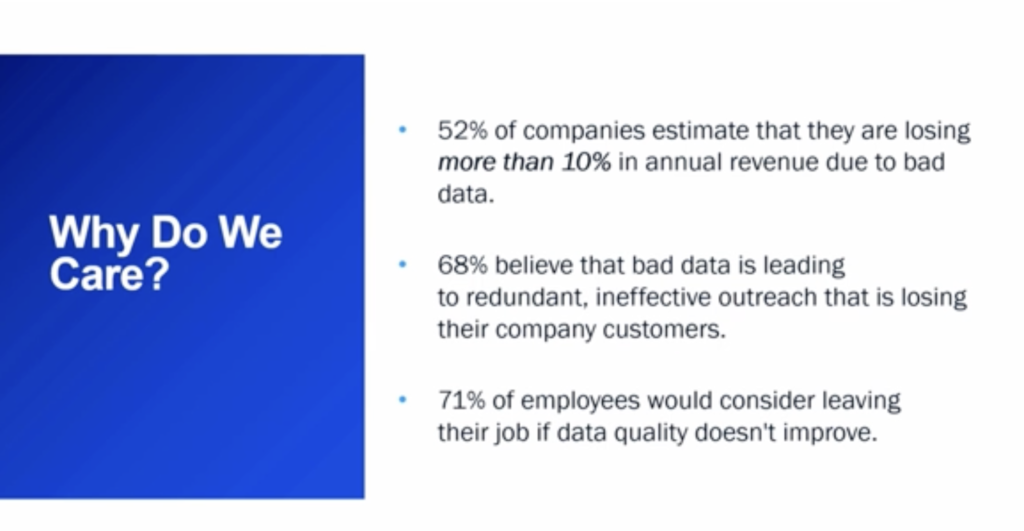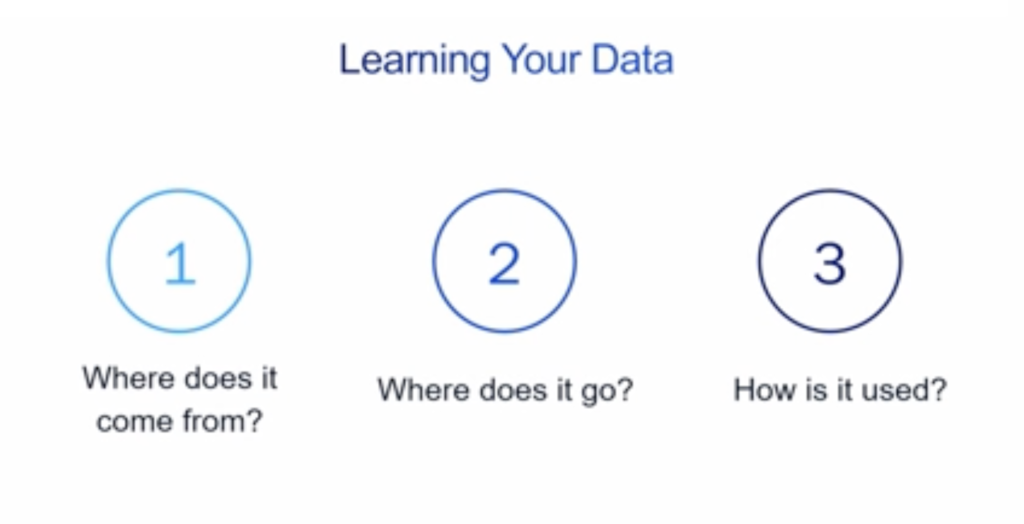
Bad data is responsible for an estimated 10% in lost revenue!
Clearly, data integrity is a big deal for marketers. You can’t market to non-existent prospects.
Employee churn is one reason for CRM data to decay. But it’s not the only reason—and it doesn’t matter why. Accurate data is key to targeted marketing efforts.
Here’s Andrew Fragias from Validity inc. discussing your marketing data integrity at B2B Forum in 2022. Watch Andrew’s video or read the transcript below.
So we’re first gonna talk about the state of data quality and why we are here.
We’re gonna profile your data, learning some ways to do that. Easily. Not over complicating it. How to prioritize the data points that matter to you and your business. How to combat data decay and how to build healthy, effective lists and segments.

So the state of data quality today:
Validity partnered with over 300 different companies to get some statistics on the state of data quality.
What we found was, 94% of businesses agree that CRM data is critical to making key business decisions. (Keep that in mind, when we get to the third point there.)
So the second [finding] is about the rate of CRM data decay. That’s accelerated 22% pre-pandemic, to more than 37.5% annually today. One of those major causes is what we call the Great Resignation. Lot of people are moving jobs, and our data is not keeping up to date with all those [changes].
Finally, only 18% of survey respondents say that maintaining CRM data quality is a high priority for company leadership.
If you take that compared to the first point: why isn’t that higher? 94% of businesses agree data quality is key to making business decisions, yet only 18% of leadership are doing something about it.
So what are we missing here? Are we over-complicating it? Are we thinking it’s too hard? Or is no one taking responsibility… and palming it off to someone like the Salesforce admin, which is me?

Why do we care about this stuff? 52% of companies estimate that they are losing more than 10% in annual revenue.
These things are such as bad forecasting. You could be over-forecasting, for example, and planning your year based on that over-forecasting. Or because you have a bunch of duplicate records. Or because people aren’t updating the records properly.
Or you could even just not know what your target audience is for your campaigns. Predicting effective conversion rates that don’t align to the amount of audience you’re actually hitting.
68% [of companies] believe that the data is leading to redundant, ineffective outreach.
We’re in the world of content personalization. Dynamic content. I know for a fact I will not open an email if it doesn’t make sense to what I want, or what I’ve been going to a website and wanting to know about.
71% of employees would consider leaving their job if data quality doesn’t improve.
So some interesting stats there.
When you pair them all together: Everyone agrees we have an issue. Everyone agrees that data quality is important. But leadership is not on board with it, right? And everyone wants to leave, because it’s affecting the way they do their business, their jobs.
This room’s full of marketers, admins, the lot. And all [that] everyone wants to do is an effective job. Effective outreach to your customers. Regardless if that’s a transactional email or a marketing email.

So where do we start?
There’s a lot of places. Data is very scary, unless you’re a data nerd like myself, right? I live and breathe that stuff. It can get very scary. You can spend hours upon hours just looking at different statistics and different sets of data to find out patterns and what’s happening.
So here’s some tips on how to do it easily.
Learn your data. Where does it come from? Know which system it comes from, where you’re capturing it. So is it an online form? Is it an external system? Are you getting it from an event such as this?
Every time you’ve gone to a session, you’ve been scanned. Those scans go somewhere, right? We want to know where the data is coming from and that determines how reliable things are overall.
Then where does it go?
And what I mean by, “where it goes,” in most cases, people have a CRM in place, right? Such as Salesforce, Dynamics 365, HubSpot, you name it. Once you get these leads or these inquiries, it is going into a central place, whether that’s a CRM or something else.
From there, it’s then used in downstream efforts. It’s used in your marketing campaigns. It’s used in your customer support and customer success outreach. It’s used to make business decisions.
That is why it’s important to understand where things are going before you can make decisions on how to clean it up.
And then finally, how is it used, right? We know which systems it’s going to. In those systems, what are we doing with it? In particular, are we using all of the data we’re sending there? Or are we only using parts of it?
Published 5/3/23
Of course… we left out the juicy “how to solve it” bits from Andrew’s clip. That’s insider information for B2B Forum attendees!
B2B Forum is packed with marketing insights, strategies, and tactics taken from the real world experience of over forty industry experts, packaged into context you can actually put to use.
Join us in Boston for B2B Forum 2024 this coming November 12-14, 2024. Early buyers get B2B Forum tickets at their lowest rate, and discounted hotel rooms are available while they last.